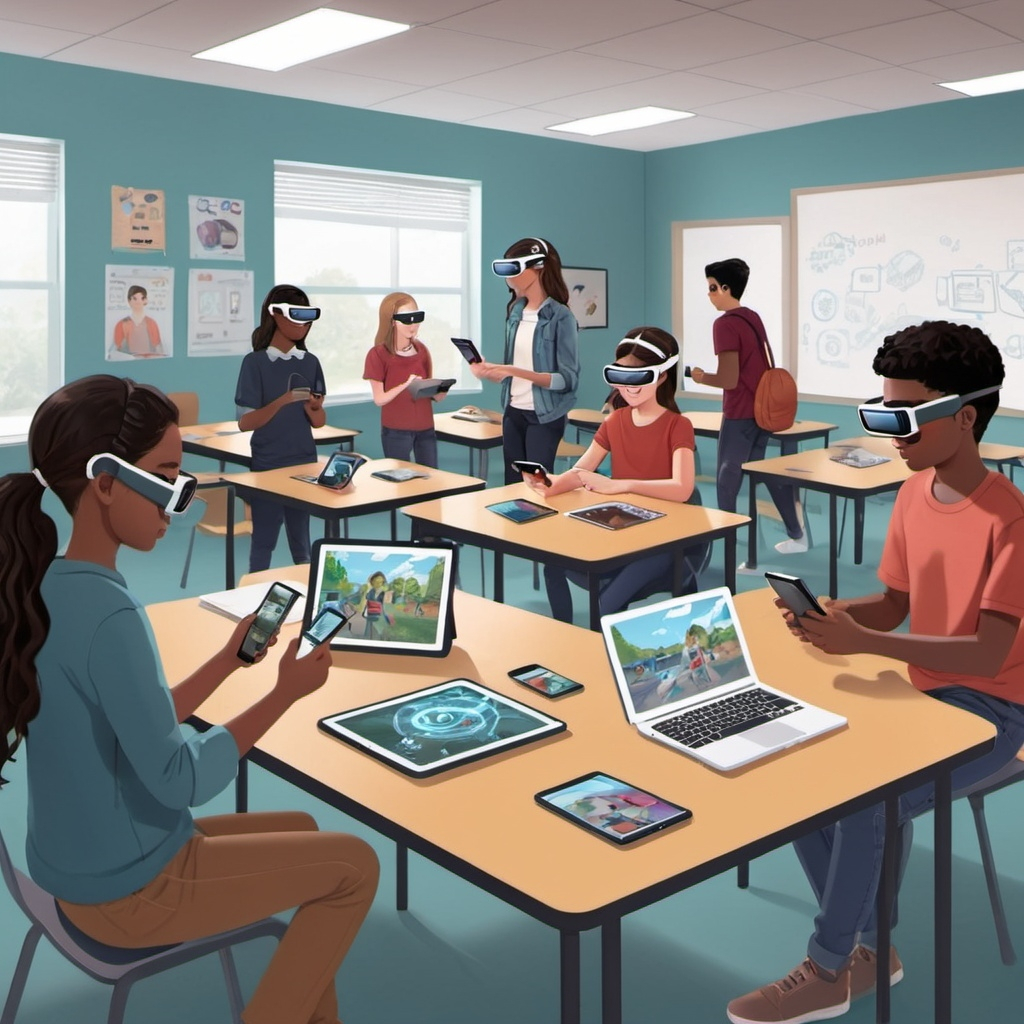
The Benefits of Augmented Reality in Education: A Comprehensive Guide
Augmented Reality (AR) is an innovative technology that overlays digital information and media onto the real world, providing an interactive and immersive experience. In recent years, AR has gained significant traction in the education sector, offering new ways to engage students and enhance learning experiences. By combining virtual and physical elements, AR has the potential to transform traditional education methods and provide students with a deeper understanding of complex concepts. This article explores the various benefits of augmented reality in education, its applications, and how it can revolutionize the learning process.
1. Enhanced Engagement and Motivation
Overview: One of the most significant benefits of AR in education is its ability to capture students’ attention and keep them engaged. By integrating interactive elements and gamification, AR makes learning more enjoyable and motivates students to participate actively in their lessons.
Key Benefits:
- Interactive Learning: AR applications allow students to interact with 3D models, animations, and simulations, making learning more dynamic and hands-on.
- Gamification: Incorporating game-like elements, such as rewards and challenges, can increase motivation and encourage students to explore educational content more deeply.
- Visual Learning: AR provides visual representations of abstract concepts, helping students better understand and retain information.
2. Improved Understanding of Complex Concepts
Overview: AR can simplify complex concepts by providing visual and interactive representations that make abstract ideas more tangible. This is particularly useful in subjects like science, mathematics, and history, where understanding can be enhanced through visualization.
Key Benefits:
- 3D Visualizations: AR enables the visualization of complex structures, such as the human body, molecular models, or historical events, allowing students to explore them in detail.
- Simulations: Students can conduct virtual experiments and simulations, providing a safe and cost-effective way to explore scientific phenomena.
- Spatial Awareness: AR helps students develop spatial awareness by allowing them to visualize and manipulate objects in a 3D space.
3. Personalized Learning Experiences
Overview: AR can be tailored to meet the individual learning needs of students, providing personalized content and pacing. This flexibility allows educators to address different learning styles and abilities, ensuring that all students can benefit from the technology.
Key Benefits:
- Adaptive Learning: AR applications can adapt to the student’s progress and provide personalized feedback, helping them to master concepts at their own pace.
- Diverse Learning Styles: AR supports various learning styles, including visual, auditory, and kinesthetic, making it accessible to a wide range of students.
- Self-Directed Learning: Students can explore AR content independently, encouraging self-directed learning and critical thinking skills.
4. Increased Accessibility and Inclusivity
Overview: AR has the potential to make education more accessible and inclusive for students with diverse needs. By providing alternative ways to interact with content, AR can support students with disabilities or learning challenges.
Key Benefits:
- Support for Disabilities: AR can offer visual and auditory aids, subtitles, and other features to support students with hearing or visual impairments.
- Language Learning: AR can provide immersive language learning experiences, helping students improve their language skills through interactive scenarios.
- Inclusive Classrooms: AR allows for the creation of inclusive learning environments where all students can participate and engage with the content.
5. Real-World Applications and Contextual Learning
Overview: AR can bridge the gap between classroom learning and real-world applications by providing contextually relevant content. This helps students understand how their knowledge applies to real-world situations and enhances their problem-solving skills.
Key Benefits:
- Contextual Learning: AR can provide contextual information and scenarios, helping students understand the relevance of their lessons to real-world situations.
- Career Exploration: AR can introduce students to various career paths and industries, providing a virtual tour of workplaces and job roles.
- Field Trips and Exploration: AR can simulate virtual field trips, allowing students to explore historical sites, natural environments, and other locations from the classroom.
6. Collaboration and Social Learning
Overview: AR can facilitate collaboration and social learning by enabling students to work together on interactive projects and activities. This promotes teamwork, communication, and the sharing of ideas.
Key Benefits:
- Collaborative Projects: AR applications can support group projects, where students work together to solve problems or create presentations.
- Social Interaction: AR can facilitate social interaction by encouraging students to share their findings and collaborate on tasks.
- Peer Learning: Students can learn from each other by discussing AR experiences and sharing insights.
7. Engagement Beyond the Classroom
Overview: AR extends learning beyond the confines of the classroom, providing opportunities for students to explore educational content at home or on the go. This flexibility enhances the learning experience and encourages lifelong learning.
Key Benefits:
- Home Learning: AR applications can be accessed on smartphones and tablets, allowing students to continue learning outside of school hours.
- Field-Based Learning: AR can be used in field-based learning experiences, such as exploring natural environments or historical sites.
- Parent Involvement: Parents can engage with their children’s education by exploring AR content together, fostering a supportive learning environment at home.
Conclusion
Augmented Reality is a powerful tool that has the potential to transform education by providing immersive and interactive learning experiences. Its ability to enhance engagement, simplify complex concepts, and support personalized learning makes it an invaluable asset in the modern classroom. As technology continues to evolve, AR is expected to play an increasingly important role in education, offering new and innovative ways to engage students and improve learning outcomes.

Recent Comments